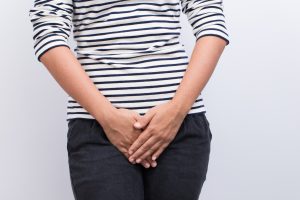 Bladder incontinence can develop after a person has experienced a stroke, depending on the degree of the brain damage and location of the affected area.
Bladder incontinence can develop after a person has experienced a stroke, depending on the degree of the brain damage and location of the affected area.
Bladder incontinence is usually brought on by the weakness of bladder muscles which reduces one’s ability to control urine.
Advertisement
This can lead to urinary urgency, higher urination frequency, and even urine leaks.
Below you will find treatments and home remedies to better manage bladder incontinence after a stroke.
Bladder problems after stroke
There are different bladder-related problems that can stem from a stroke. Examples include:
Frequency: needing to pass urine frequently.
Urge incontinence: having a strong urge to urinate.
Nocturnal enuresis: wetting the bed while asleep.
Functional incontinence: patient may have difficulty getting to the bathroom or removing their clothing in time to use the toilet.
Reflex incontinence: passing urine without the realization that you have done so.
Overflow incontinence: the bladder does not empty completely, so leaks occur.
Urinary retention: urine stays in the bladder and is not fully released, which increases the risk for infections.
Constipation: as a result of not drinking enough water or not being active, one can experience constipation after stroke.
Diagnosis and tests for incontinence after stroke
 It’s important that you get a proper diagnosis of your urinary incontinence after stroke. There are ways to properly manage it, so you don’t have to live with urinary frequency and leaks.
It’s important that you get a proper diagnosis of your urinary incontinence after stroke. There are ways to properly manage it, so you don’t have to live with urinary frequency and leaks.
For proper urinary incontinence diagnosis, your doctor will look at your fluid intake, exercise level, and mobility, along with current medications you are on, as these all can contribute to urinary incontinence.
Your doctor can send you for a bladder scan and urine test, as well as ask you to keep a bladder diary.
In a bladder scan, your doctor will take an ultrasound image of your bladder to determine how well it is emptying. A urine test will check for any infections. In a bladder diary you will document how often you are urinating and how much fluid you are drinking.
Tips to manage incontinence and bladder problems after stroke
Along with following the treatment plan your doctor has set out for you for your post-stroke recovery, you will also need to manage your bladder incontinence and the following tips can help.
Incontinence treatments often depend on the type of urinary incontinence a person suffers from and how severe the condition is.
In some situations, pelvic floor exercises called Kegels can help strengthen the urinary sphincter and thus the pelvic muscles to help prevent the urine from leaking out.
There is also a technique known as bladder training. Someone who bladder-trains is aiming to bring urge under control. One way to do this is to schedule certain times for washroom breaks and stick to those times. After a while, the bladder gets accustomed to emptying at specific times and the random, frequent urges start to subside.
Some urologists also suggest double-voiding, which means going to the toilet, then waiting for a couple minutes and going again.
Advertisement
In some instances, medications are prescribed for urinary incontinence. This can include medications that calm overactive bladder or lessen the urge sensation. Topical estrogen has also been used to help reinforce tissues in the vaginal area, which has potential to lessen symptoms.
Urinary incontinence can be difficult to cope with, and for many sufferers it goes undiagnosed. People keep it a secret because they are embarrassed about the condition. It’s important that these people seek help, not only so that they can gain a better quality of life, but also to protect themselves from any complications.
People with urinary incontinence have been known to experience skin problems, such as rashes and infections, due to wet or damp skin. They are also prone to urinary tract infections. Women with urinary incontinence are at risk of prolapse. This is when parts of the vagina, bladder, and urethra fall into the entrance of the vagina because of weak pelvic floor muscles.
